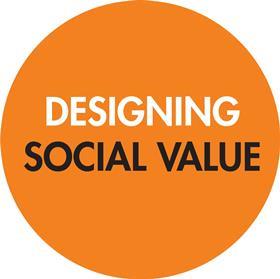Flora Samuel looks back at the recent history of social value and finds much to celebrate

“In the context of the built environment, social value is created when buildings, places and infrastructure support environmental, economic and social wellbeing, and in doing so improve the quality of life of people.” This definition of social value, recently published by the UK Green Building Council, will I hope become the standard for the industry.
The team have done a remarkable job in developing a diagram that somehow morphs Kate Raworth’s famous Doughnut and the commonly used triple bottom line of sustainability – social, economic and environmental. For me, as argued in the social value toolkit for architecture, we have to keep referring back to that triple bottom line as the basis of everything we do, not only because it aligns with the government’s Treasury Green Book but because it is the simplest, most demonstrable way we have of evidencing the value of good buildings and places. In an era where data, and its categorisations, are going to become increasingly powerful we have to keep things simple.

The Quality of Life Foundation has just published its remarkable framework for showing how homes and communities affect our quality of life. It was developed with Urbed who were also the brains behind the new national design code, and they sit together well. In many ways the framework is an expansion and improvement on the set of post-occupancy evaluation questions that we offered in the Social Value Toolkit for Architecture. The Quality of Life Foundation is already developing it into a post-occupancy service with considerable interest from developers.
Recently I came across a practice who told me that using the Social Value Toolkit for Architecture (SVT) had enabled them to improve their social value scores in tender bids. This was good news, if a bit surprising, as we thought – given the dysfunctional nature of bidding – that its impact would only really be in alerting the profession to nuances of social value and also in showing how it could be monetised if absolutely necessary (I remain fundamentally against monetisation). I should say that writing the SVT with my remarkable colleagues on the Research Practice Leads Group (rebooting after lockdown due to popular demand) meant that I was asked to join a run of advisory groups on social value (Construction Innovation Hub, UKGBC, London Sustainable Development Commission, BRE) where I continue to trumpet the social value of design.
There are also some serious signs of practices upping their game in demonstrating the social and environmental value of their practices
As a result of this increasing workload, this will be my last social value column for now. I am pleased to report that I have seen a real shift since I began writing for Building Design. Back then in 2019 social value, in procurement, was pretty much solely focused on jobs and apprenticeships during the construction phase, with a bit of office volunteering in schools on the side. Now in 2021 there is very wide recognition that social value is also very much about quality of life for communities in the long term, which I would argue was the central offer of good architecture.
There are also some serious signs of practices upping their game in demonstrating the social and environmental value of their practices. A notable triumph is Stride Treglown’s elevation to BCorp status. Stantec, with whom I am working on a Knowledge Transfer Partnership, has been voted fifth most sustainable company in the world by Corporate Knights. Both practices take their ethical responsibilities extremely seriously. If we have to have rankings and prizes in architecture then this is how it should be done.
>> David Rudlin: Unlocking the design code with one of its authors
Our work with Stantec is focusing on developing an enabling framework to help local authorities give proper consideration to social value in their local development plans. Oh how I wish we had managed to get this in place before the LDP in my area was made.
Anyone who has been following my increasingly desperate tweets will be aware that our little inner-city Cardiff street has had to contend with three planning permissions for change of use from shops to restaurants (with all the nuisance that they bring) in as many months. No sooner had I sent off one petition than I am now having to gather 50 names on the electoral roll for another (not so easy in a pandemic). It seems that our community, pinned in by restaurants on every side, doesn’t stand a chance in the face of economic value, business and our archaic LDP. Next time you work on a project that impacts on established communities (and I include wildlife in this) please remember to do as you would be done by.
















No comments yet